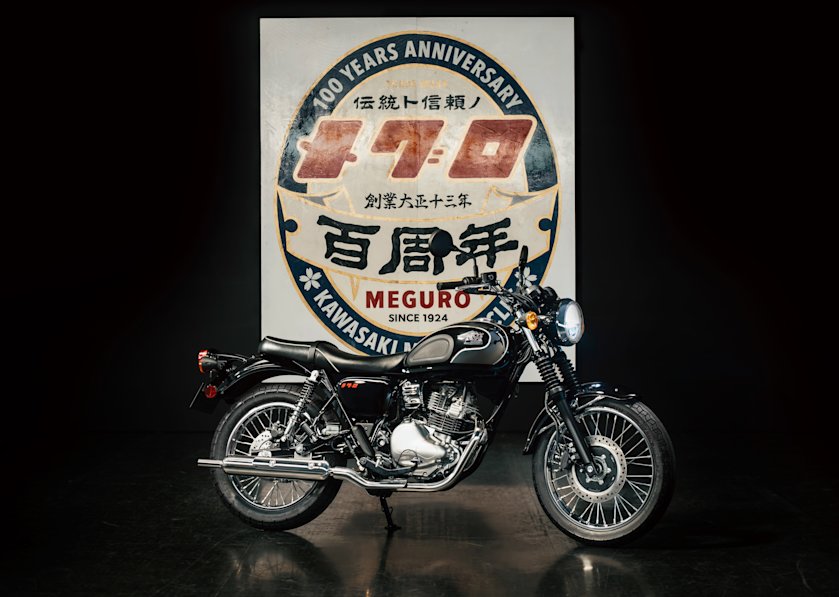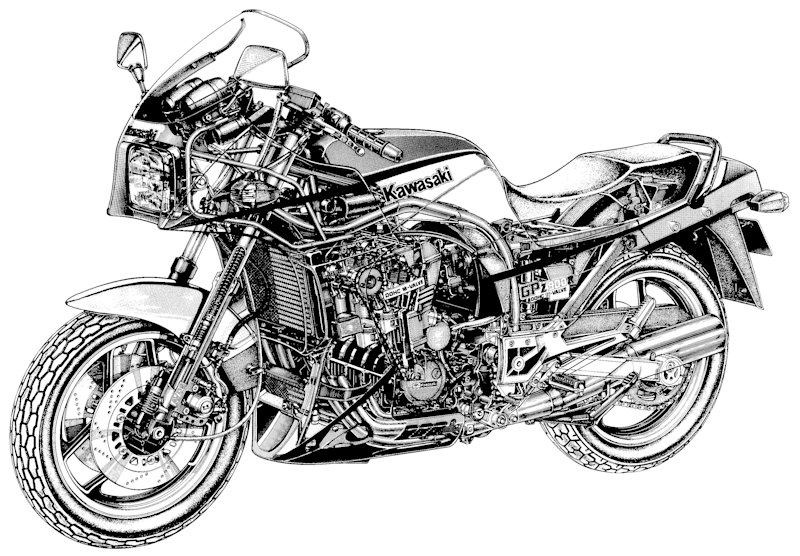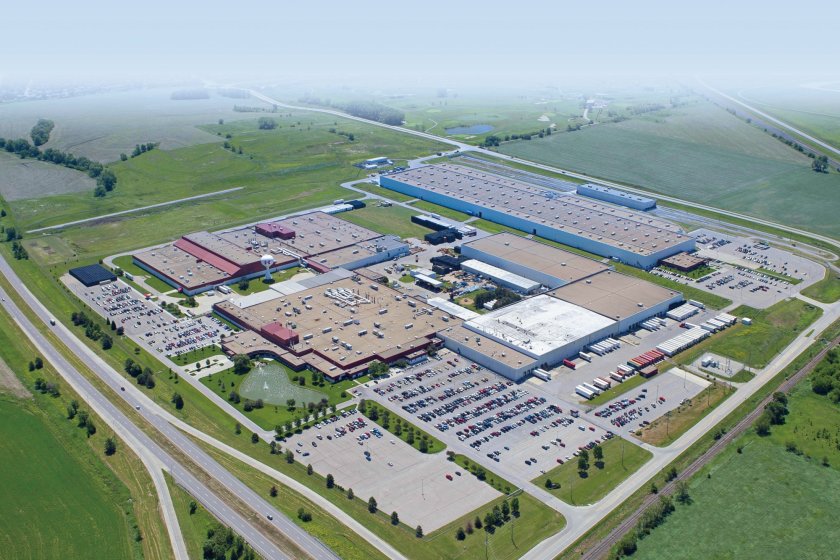Meguro: Japan’s Oldest Active Motorcycle Brand Founded 100 Years Ago The Origin of Japanese Large-Displacement Motorcycles and Where They Head Next

The Meguro Manufacturing Company (Meguro) was founded in 1924 at a place close to the Meguro River in Tokyo, Japan. Today, Meguro is a part of Kawasaki Motors, the motorcycle division of the Kawasaki Group, and its history and technical expertise have been passed down through the years to the present. On the 100th anniversary of Meguro in 2024, Kawasaki launched the world's first*¹ strong hybrid motorcycle, and also became the first mass-production motorcycle manufacturer to successfully demonstrate a hydrogen-engine equipped motorcycle*² publicly. The guiding theme for Kawasaki Motors is “Heritage and Innovation,” as we continue to explore every possibility through what we do. Here, we’ll take a look at the 100-year history of Meguro, an important brand that formed the roots of Kawasaki motorcycles.
*1 World's first mass-produced motorcycle from a major manufacturer (excluding scooters). As of October 6, 2023, according to Kawasaki Motors, Ltd.
*2 Strong hybrid systems combine an internal combustion engine (ICE) with an electric motor for powerful riding, and because of their large battery capacity they are able to run on electricity alone.
1: Meguro: The Pioneer of Japanese Large-Displacement Sportbikes

Have you ever heard of a motorcycle manufacturer called Meguro? In Tokyo, the Meguro River is known as one of the best cherry blossom viewing spots in the city. The Meguro Manufacturing Company factory was originally located about a five-minute walk from the banks of the river. The company was founded 100 years ago in 1924. Before World War II, the company had been active in motorcycle racing, achieving success against large-displacement machines from Europe and the United States. In 1937, Meguro, which had been improving its technical abilities through racing, completed its first production model, the 500cc “Z97.” This model became the origin of Japanese large-displacement sportbikes and fueled the desires of many Japanese motorcyclists.

Moving into the 1960s, Meguro formed a business alliance with Kawasaki Aircraft Co., Ltd. (now Kawasaki Group / Kawasaki Motors) in 1964, bringing its time as Meguro Manufacturing Company to an end and proceeding forward into the future as part of Kawasaki. Meguro’s skilled engineers were transferred into Kawasaki, where they continued to focus on large-displacement sportbikes. They produced one masterpiece after another, including the famous 650-W1, which directly inherited the Meguro lineage, as well as the Z1 and Ninja later on.

In 2021 Kawasaki launched the Meguro K3. Its launch was a statement of our determination to show that the cutting-edge technological prowess and the traditions of Japan's oldest sportbike manufacturer, Meguro, were still alive in Kawasaki motorcycles. Then in 2024, to mark the occasion of the 100th anniversary of Meguro Manufacturing Company’s founding, we launched the Meguro S1 and W230—two models intended to carry on the tradition of their respective brands.


2: Meguro History: From Its Founding to the Business Alliance with Kawasaki
The Meguro Manufacturing Company was founded in August 1924 by Nobuharu Murata from Tochigi Prefecture and Takaharu Suzuki from Shizuoka Prefecture. The company was originally established as an independent arm of Murata Ironworks, which was founded with investment from Count Kuwashi Katsu, the tenth son of Yoshinobu Tokugawa (last of the Tokugawa shogunate). The “Meguro” name was chosen because of the company’s close proximity to Meguro Station and the Meguro Fudoson temple.
After the company was founded, Murata and Suzuki manufactured Japan's first two-speed transmission for motorcycles as well as a transmission with back gears, which was revolutionary at the time. These transmissions were easy to use and rarely malfunctioned and thanks to this, Meguro Manufacturing Company succeeded in developing a strong reputation as a transmission manufacturer. Later, the company developed a 498 cm3 air-cooled, 4-stroke, single-cylinder engine, which it began to supply to other motorcycle manufacturers in 1932. At the same time, they also began participating in motorcycle races held around Japan with factory racebikes developed in-house, all the while building up their reputation as a motorcycle manufacturer. In 1937, Meguro produced its first complete motorcycle, the Z97, by applying the knowledge it had gained through racing. At the time, 500cc class motorcycles were considered large-displacement models, and it was extremely rare for a Japanese manufacturer to enter the market with a sport model. In 1939, ten Z97 motorcycles, Meguro’s first ever motorcycle, were registered for police use by the Tokyo Metropolitan Police Department.
In December 1941, Japan entered the Pacific Theatre of World War II. Consequently, Meguro Manufacturing Company relocated its motorcycle production facilities to Karasuyama-machi, in Tochigi Prefecture (present-day Nasukarasuyama City). The choice to evacuate led to the preservation of technology and production equipment. In 1948, just three years after the war, the company resumed manufacturing and selling motorcycles, which contributed to Japan’s reconstruction. In 1950, Meguro released the “Junior J1,” which featured a 248 cm3 air-cooled 4-stroke single-cylinder engine, becoming Japan's first 250cc model while pioneering a class of motorcycles that would go on to become very popular. The final model of the Junior series, the Kawasaki 250 Meguro SG, became the design inspiration for the Kawasaki Estrella released in 1992, and the Meguro S1 released in 2024.

Meguro reached its zenith of fame at the second Asama Volcano Race (official name: 2nd All Japan Motorcycle Endurance Road Race) held in October 1957. The 19.2 km course had no paved sections, and had a very rough surface that was only lightly prepared beforehand. Meguro racebikes finished 1st, 2nd, 4th, and 5th in the largest displacement class (500cc), demonstrating Meguro’s unrivaled prowess in the large-displacement category.
Meguro motorcycles continued to be used by the Japanese government after the war. Meguro’s first twin-cylinder model, the “Senior T1,” its successor the “Senior T2,” and the single-cylinder “Stamina Z7” were all used by the Tokyo Metropolitan Police Department and Japanese local police forces in the 1950s and 1960s. These were followed by the “Stamina K1,” which featured a newly developed 496 cm³ twin-cylinder engine, allowing it to perform well in the new high-speed era. It served as the lead vehicle for the 1964 Tokyo Olympics opening ceremony, where it was on display for the entire world on television.
The Stamina K1 was released in November of 1960. To counter the shift toward small-displacement motorcycles by new manufacturers, Meguro announced a business alliance with Kawasaki Aircraft Co., Ltd. Then in 1962, the company was re-launched as “Kawasaki Meguro Manufacturing Co., Ltd.” Kawasaki had already established itself as an aircraft manufacturer, completing its first biplane in 1922, and following World War II, the company entered the motorcycle industry with the release of the KB-1 engine for bicycles. The engine was designed and produced at the Kawasaki Machine Works' Banshu Gear Plant, and its design took full advantage of the engineers’ technological capabilities stemming from their experience designing aircraft. To start with, Kawasaki’s lineup focused on small-displacement engines.
3: Meguro History: Succession of Technology and the Arrival of the W
Following the business alliance, Kawasaki Aircraft Co., Ltd. was responsible for the design and mass production of a model to succeed Meguro’s flagship model, the Stamina K1. The team was able to utilize many of Meguro’s pipe frame development concepts and electric welding techniques for the motorcycle chassis. The Stamina K1’s successor, created by combining the best of both companies’ technologies, was called the “Kawasaki 500 Meguro K2,” and it became Kawasaki’s first large-displacement model. It broke cover at the 11th Tokyo Motor Show in 1964. The “K2” was further improved upon to create the “Kawasaki 650-W1,” which became the largest-displacement model in Japan at the time.

And so, the W brand was born and passed through several generations before arriving at the W650 almost 30 years later in 1999. Through the efforts of many people—for example, an engineer who was involved in the inspection of the original Stamina K1P (police model) for the Tokyo Olympics also worked on the W650’s chassis testing—technology and ideas were connected, allowing Meguro’s DNA to be passed down unbroken. The W650 evolved into the W800 in 2011, and it is still in production today.
The former Meguro engineers continued to demonstrate their skills after the merger with Kawasaki, as they became deeply involved in development of the 1972 Kawasaki 900 Super 4 (known as the Z1) and the 1984 GPZ900R (the original Ninja). Kawasaki is the world-class motorcycle manufacturer it is today thanks to the innovative technological knowhow gained through aircraft manufacturing, combined with Meguro's top-notch chassis design and machining skills.
Recent examples of world-class, cutting-edge Kawasaki motorcycles include the Ninja H2/H2R, the world’s first mass-produced motorcycle equipped with a supercharged engine, the Ninja/Z7 Hybrid, the world's first motorcycle with a strong hybrid engine*¹. Also, in response to modern demands, Kawasaki carried out the first public demonstration by a mass-production manufacturer of a motorcycle equipped with a hydrogen engine.

4: Meguro’s Resurrection and What Lies Ahead
In 2021, Kawasaki, which has “Heritage and Innovation” as one of our brand cores, resurrected the Meguro brand after half a century. The first product was the Meguro K3, powered by a 773 cm³ twin-cylinder engine. The Stamina K1 was designed and developed with Meguro’s fortunes at stake. The Kawasaki 500 Meguro K2 that followed was an evolution of that model. Then, the model intended to resurrect the brand after lying dormant for so long was given the name “Meguro K3” as it follows on the from the K1 and K2. Looking back through the brand’s history, this succession of model names is deeply moving.

In the Meguro’s 100th anniversary year of 2024, the Meguro S1, featuring a 233 cm3 single-cylinder engine, was introduced as the second model aimed at resurrecting the Meguro name, and is a legitimate successor to the Kawasaki 250 Meguro SG launched 60 years prior. The Meguro S1 was developed with the goal of letting small-displacement motorcycle license holders enjoy the much-sought-after high performance and high quality for which the Meguro name was known.

As part of the 100th anniversary of the Meguro's birth, a special commemorative exhibition called the “Meguro x Meguro Retrospective,” was held in September 2024 at Meguro Station, near the company's founding site, in conjunction with the 140th anniversary of the station's opening. The exhibition featured an original Meguro Z97 used in the hit movie “Godzilla-1.0” in 2023, and a Kawasaki 500 Meguro K2 released in 1965, which were lined up next to the new Meguro S1 and W230 models. Original canvas tote bags, metal-flake design stickers, and rubber key chains were on sale as well. Some of the visitors to the exhibition were actual former employees of the Meguro Manufacturing Company. They enjoyed what they saw, making nostalgic comments like, “I used to make this part right here,” or “I was in charge of painting,” as they pointed to the historic models on display.

The city of Nasukarasuyama in Tochigi Prefecture, where the Meguro plant was once located, is now known as the “Mecca of Meguro.” Since the Meguro brand was revived in 2021, an event called the “Meguro Cannonball Nasukarasuyama,” a meeting for owners of old and new Meguro motorcycles, has been held every November. Because the event is open to all makes and models, more people participate every year, with around 800 people joining this year from all over Japan. A total of 138 Meguro motorcycles were at the event, 54 of which were Meguro K3s. Next year's event is expected draw an even larger group with new owners of the Meguro S1 joining in.

A stunning sight with multiple Meguro motorcycles lined up
Celebrating its 100th anniversary, Meguro has connected technology and ideas from person to person over the years and through organizational changes. In the next installment, we’ll report on the thoughts of the engineers involved in the development of the Meguro S1, behind-the-scenes stories about its development, and the future evolution of the Meguro brand.






